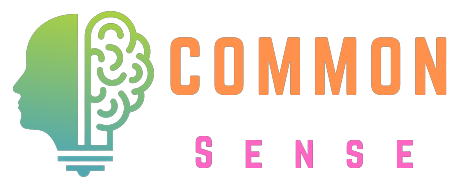
The Power of Brainstorming
I. What Is Brainstorming?
At its core, brainstorming is a group or individual activity designed to generate a wide array of ideas to address a specific problem or challenge. The process encourages free thinking, creativity, and the suspension of judgment to allow all ideas, no matter how unconventional, to surface.
The concept of brainstorming was popularized by advertising executive Alex Osborn in the 1940s. He outlined four key principles:
1. Focus on quantity: The more ideas, the better.
2. Withhold criticism: No idea is dismissed during brainstorming.
3. Welcome wild ideas: Creativity often stems from unconventional thoughts.
4. Combine and improve ideas: Build upon existing ideas to create better solutions.
Complex problems often require innovative and multifaceted solutions. Here’s why brainstorming is a vital tool in tackling these challenges:
1. Encourages Diverse Perspectives: In group brainstorming sessions, participants from different backgrounds contribute varied insights, enhancing the pool of ideas.
2. Fosters Creativity: By suspending judgment, brainstorming allows individuals to think freely and explore novel approaches.
3. Promotes Collaboration: Brainstorming creates a shared sense of purpose, encouraging teamwork and a collective drive to solve problems.
4. Breaks Mental Blocks: The free-flowing nature of brainstorming can help participants overcome cognitive biases and limitations that hinder creativity.
5. Efficient Problem-Solving: Generating a large number of ideas quickly provides a strong foundation to identify the most feasible and effective solutions.
While traditional brainstorming involves gathering a group in a room to discuss ideas, numerous techniques have evolved to enhance its effectiveness. Here are some popular ones:
1. Classic Brainstorming: Involves an open discussion where participants share ideas verbally. A facilitator captures these ideas on a whiteboard or sticky notes.
2. Mind Mapping: A visual technique where a central problem is written in the center of a page, and related ideas branch out from it. This method helps in identifying relationships between concepts.
3. Reverse Brainstorming: Instead of solving the problem, participants brainstorm ways to worsen it. This can provide fresh perspectives and insights into overlooked challenges.
4. Silent Brainstorming (Brainwriting): Participants write down their ideas individually, avoiding the influence of groupthink. Ideas are later discussed collectively.
5. SCAMPER Technique: A structured approach that prompts participants to think about ways to:
Substitute, Combine, Adapt, Modify, Put to another use, Eliminate, Reverse existing ideas or elements.
6. Six Thinking Hats: Participants assume different roles or perspectives (e.g., optimistic, critical, emotional) to approach the problem from multiple angles.
To maximize the potential of brainstorming, follow these structured steps:
1. Define the Problem Clearly: Start with a well-defined problem statement or goal. The clearer the focus, the more relevant the ideas.
2. Set Ground Rules: Establish guidelines, such as withholding criticism and encouraging wild ideas, to create a supportive environment.
3. Assemble a Diverse Group: Include individuals with varying expertise, perspectives, and skills to enhance the quality of ideas.
4. Use Facilitation Tools: Leverage tools like whiteboards, sticky notes, or brainstorming software to capture ideas efficiently.
5. Encourage Free Thinking: Allow participants to express their thoughts openly, no matter how unconventional they may seem.
6. Organize and Evaluate Ideas: Once the brainstorming session ends, group similar ideas, identify patterns, and evaluate their feasibility and potential impact.
7. Follow Up with Action: Translate the most promising ideas into actionable plans. Assign responsibilities and set timelines for implementation.
Brainstorming sessions are not without their challenges. Here are some common pitfalls and strategies to address them:
1. Dominance of Strong Personalities: Ensure equal participation by using techniques like brainwriting or round-robin sharing.
2. Groupthink: Encourage independent thinking and use anonymous idea-sharing platforms to avoid conformity.
3. Lack of Focus: Keep the discussion centered on the problem statement to prevent tangents.
4. Judgment or Criticism: Reinforce the principle of withholding criticism until the evaluation phase.
1. Business Innovation: Companies like Google and IDEO rely heavily on brainstorming sessions to develop groundbreaking products and solutions. Their emphasis on creativity and collaboration has led to numerous successful innovations.
2. Community Problem-Solving: Community leaders often use brainstorming to address local issues, such as improving public transportation or reducing crime rates.
3. Personal Growth: Individuals can brainstorm solutions to personal challenges, such as career decisions or financial planning, by engaging in self-reflection or group discussions.

The power of brainstorming is more than just a problem-solving tool; it’s a mindset that encourages creativity, collaboration, and openness. Whether you’re working solo or in a group, the principles and techniques of brainstorming can unlock new possibilities and help you tackle complex problems with confidence.
By embracing brainstorming as part of your problem-solving arsenal, you not only generate innovative solutions but also foster a culture of continuous improvement and creative thinking. The next time you face a challenging problem, gather your team, grab a whiteboard, and let the ideas flow. The solution might just be one wild idea away.
Ques 1: What is brainstorming, and how does it help solve problems?
Ans: Brainstorming is a creative problem-solving process where individuals or groups generate a wide range of ideas without judgment. It helps in addressing challenges by encouraging free thinking, diverse perspectives, and collaboration. By fostering an open environment, brainstorming uncovers innovative solutions and ideas that might not emerge in a conventional setting.
Ques 2: What are the key principles of effective brainstorming?
Ans: The foundational principles of brainstorming include:
II. Why Brainstorming Is Essential for Solving Complex Problems
Complex problems often require innovative and multifaceted solutions. Here’s why brainstorming is a vital tool in tackling these challenges:
1. Encourages Diverse Perspectives: In group brainstorming sessions, participants from different backgrounds contribute varied insights, enhancing the pool of ideas.
2. Fosters Creativity: By suspending judgment, brainstorming allows individuals to think freely and explore novel approaches.
3. Promotes Collaboration: Brainstorming creates a shared sense of purpose, encouraging teamwork and a collective drive to solve problems.
4. Breaks Mental Blocks: The free-flowing nature of brainstorming can help participants overcome cognitive biases and limitations that hinder creativity.
5. Efficient Problem-Solving: Generating a large number of ideas quickly provides a strong foundation to identify the most feasible and effective solutions.
III. Effective Brainstorming Techniques
While traditional brainstorming involves gathering a group in a room to discuss ideas, numerous techniques have evolved to enhance its effectiveness. Here are some popular ones:
1. Classic Brainstorming: Involves an open discussion where participants share ideas verbally. A facilitator captures these ideas on a whiteboard or sticky notes.
2. Mind Mapping: A visual technique where a central problem is written in the center of a page, and related ideas branch out from it. This method helps in identifying relationships between concepts.
3. Reverse Brainstorming: Instead of solving the problem, participants brainstorm ways to worsen it. This can provide fresh perspectives and insights into overlooked challenges.
4. Silent Brainstorming (Brainwriting): Participants write down their ideas individually, avoiding the influence of groupthink. Ideas are later discussed collectively.
5. SCAMPER Technique: A structured approach that prompts participants to think about ways to:
Substitute, Combine, Adapt, Modify, Put to another use, Eliminate, Reverse existing ideas or elements.
6. Six Thinking Hats: Participants assume different roles or perspectives (e.g., optimistic, critical, emotional) to approach the problem from multiple angles.
IV. Steps for a Successful Brainstorming Session
To maximize the potential of brainstorming, follow these structured steps:
1. Define the Problem Clearly: Start with a well-defined problem statement or goal. The clearer the focus, the more relevant the ideas.
2. Set Ground Rules: Establish guidelines, such as withholding criticism and encouraging wild ideas, to create a supportive environment.
3. Assemble a Diverse Group: Include individuals with varying expertise, perspectives, and skills to enhance the quality of ideas.
4. Use Facilitation Tools: Leverage tools like whiteboards, sticky notes, or brainstorming software to capture ideas efficiently.
5. Encourage Free Thinking: Allow participants to express their thoughts openly, no matter how unconventional they may seem.
6. Organize and Evaluate Ideas: Once the brainstorming session ends, group similar ideas, identify patterns, and evaluate their feasibility and potential impact.
7. Follow Up with Action: Translate the most promising ideas into actionable plans. Assign responsibilities and set timelines for implementation.
V. Overcoming Common Brainstorming Challenges
Brainstorming sessions are not without their challenges. Here are some common pitfalls and strategies to address them:
1. Dominance of Strong Personalities: Ensure equal participation by using techniques like brainwriting or round-robin sharing.
2. Groupthink: Encourage independent thinking and use anonymous idea-sharing platforms to avoid conformity.
3. Lack of Focus: Keep the discussion centered on the problem statement to prevent tangents.
4. Judgment or Criticism: Reinforce the principle of withholding criticism until the evaluation phase.
VI. Brainstorming in Action: Real-Life Examples
1. Business Innovation: Companies like Google and IDEO rely heavily on brainstorming sessions to develop groundbreaking products and solutions. Their emphasis on creativity and collaboration has led to numerous successful innovations.
2. Community Problem-Solving: Community leaders often use brainstorming to address local issues, such as improving public transportation or reducing crime rates.
3. Personal Growth: Individuals can brainstorm solutions to personal challenges, such as career decisions or financial planning, by engaging in self-reflection or group discussions.

Conclusion
The power of brainstorming is more than just a problem-solving tool; it’s a mindset that encourages creativity, collaboration, and openness. Whether you’re working solo or in a group, the principles and techniques of brainstorming can unlock new possibilities and help you tackle complex problems with confidence.
By embracing brainstorming as part of your problem-solving arsenal, you not only generate innovative solutions but also foster a culture of continuous improvement and creative thinking. The next time you face a challenging problem, gather your team, grab a whiteboard, and let the ideas flow. The solution might just be one wild idea away.
FAQ
Ques 1: What is brainstorming, and how does it help solve problems?
Ans: Brainstorming is a creative problem-solving process where individuals or groups generate a wide range of ideas without judgment. It helps in addressing challenges by encouraging free thinking, diverse perspectives, and collaboration. By fostering an open environment, brainstorming uncovers innovative solutions and ideas that might not emerge in a conventional setting.
Ques 2: What are the key principles of effective brainstorming?
Ans: The foundational principles of brainstorming include:
a) Focus on Quantity: Generating many ideas increases the likelihood of finding the best solution.
b) Suspend Judgment: Allow all ideas, no matter how unconventional, to surface without criticism.
c) Encourage Creativity: Embrace unique or "wild" ideas that may spark innovation.
d) Build on Ideas: Combine or expand upon existing ideas to develop improved solutions.
Ques 3: What techniques can improve brainstorming sessions?
Ans: Some effective techniques include:
a) Mind Mapping: A visual representation of ideas branching from a central problem.
b) Reverse Brainstorming: Thinking about how to worsen a problem to uncover hidden challenges.
c) Brainwriting: Silent idea generation, avoiding groupthink.
d) SCAMPER: A structured method prompting substitution, combination, adaptation, and other actions.
Ques 4: How do you overcome challenges in brainstorming, such as groupthink or dominance?
Ans: To avoid groupthink, encourage anonymous idea submission or independent brainstorming before group discussion. For dominant personalities, use structured approaches like round-robin sharing to ensure equal participation. A neutral facilitator can also help maintain balance.
Ques 5: Can brainstorming be done effectively alone?
Ans: Yes! Solo brainstorming allows individuals to focus on their unique perspectives and think without external influence. Techniques like mind mapping or journaling can enhance creativity, and solo sessions can later be integrated with group discussions for broader input.







Do Leave Your Comment